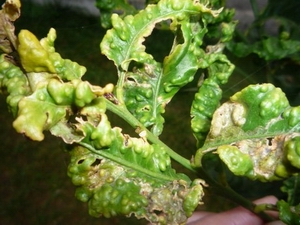 n insect known as the African Citrus Psyllid (Trioza Erytreae) is increasingly affecting citrus trees in the Canary Islands since it was first discovered in the islands, 11 years ago, leading to a reduction in the volumes and quality of the fruit they produce, according to the newspaper Cabildo de Gran Canaria.
n insect known as the African Citrus Psyllid (Trioza Erytreae) is increasingly affecting citrus trees in the Canary Islands since it was first discovered in the islands, 11 years ago, leading to a reduction in the volumes and quality of the fruit they produce, according to the newspaper Cabildo de Gran Canaria.This pest appeared for the first time in Valle Guerra, Tenerife, in 2002, and ever since, it has progressively spread to the islands of La Gomera, La Palma and Gran Canaria.
As explained by the biologist Purificación Benito, Gran Canaria, with 794 hectares devoted to citrus production, saw the appearance of the African Psyllid in 2010 in the northern and central areas of the island.
The number of plantations affected in Gran Canaria has progressive increased; while in 2012, only 32 cases were confirmed, during the first five months of 2013 this number has already quadrupled, reaching 120.
This year the pest has spread to every municipality in the island, with the exception of La Aldea, despite the fact that the insect prefers cooler temperatures and high humidity.
These insects have the appearance of aphids and feed off citrus tree leaves, where some small bumps appear. They are also able to transmit a bacterium from ill to healthy trees which can kill the tree by preventing sap circulation.
Up until now, the bacterium transmitted by the African Psyllid, known as "Candidatus Liberibacter africanus", has not appeared in the Canary Island or any other place in Europe, although in Madeira the insects have also been detected, pointed out Benito.
The pest originated in sub-Saharan Africa and the manner in which it arrived to the archipelago is unknown, although some speculate that it did via a non-inspected fruit batch introduced in the islands.
To fight the insect, phytosanitary products are used, which plantation owners must regularly alternate to prevent the insect from growing resistant, explained the biologist.







